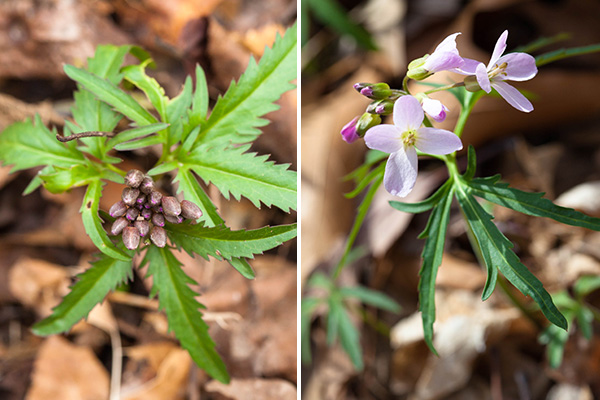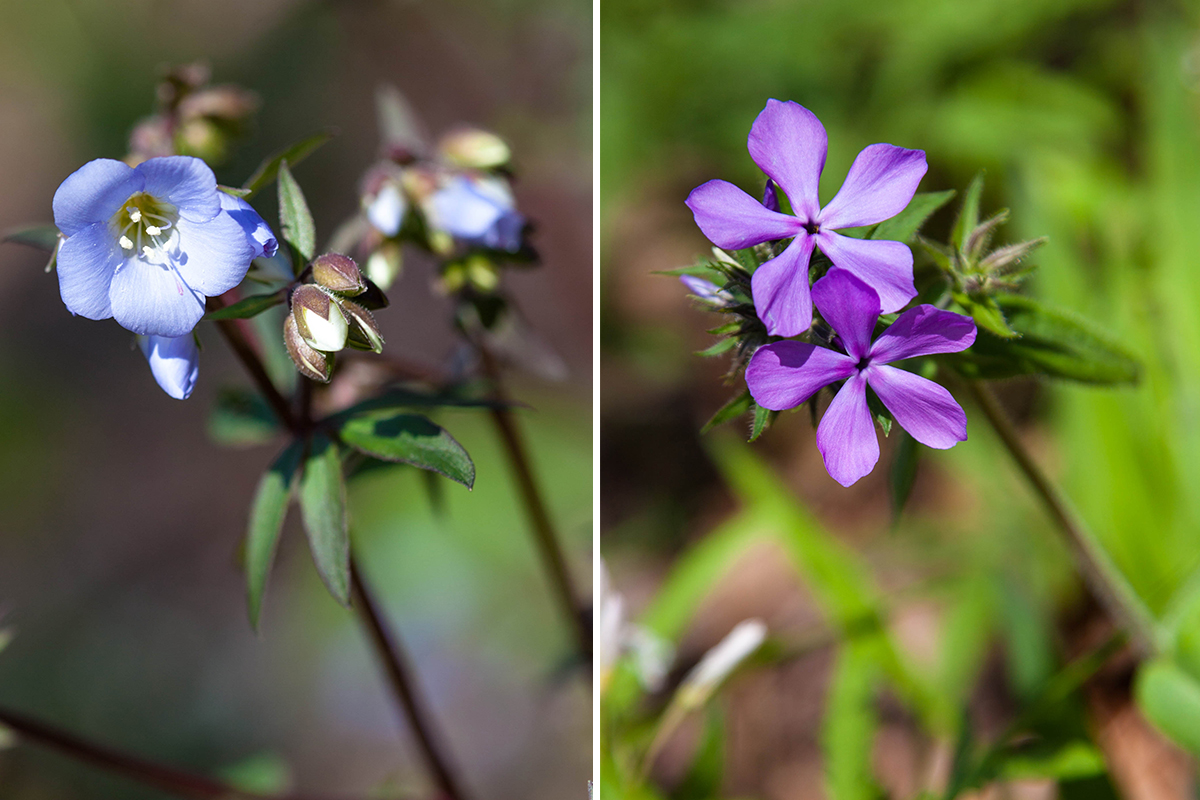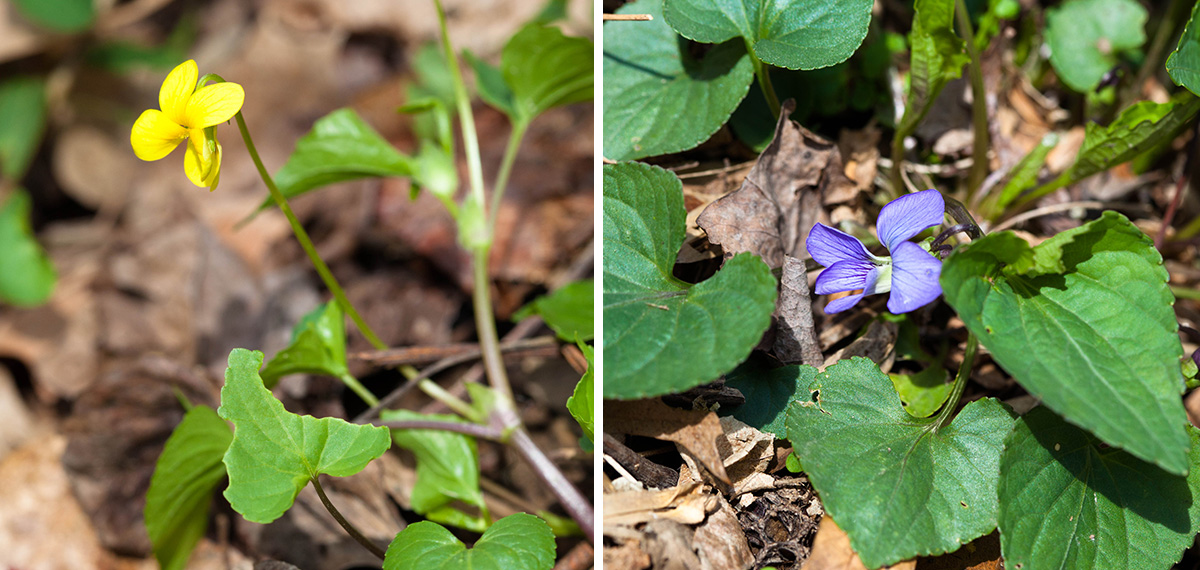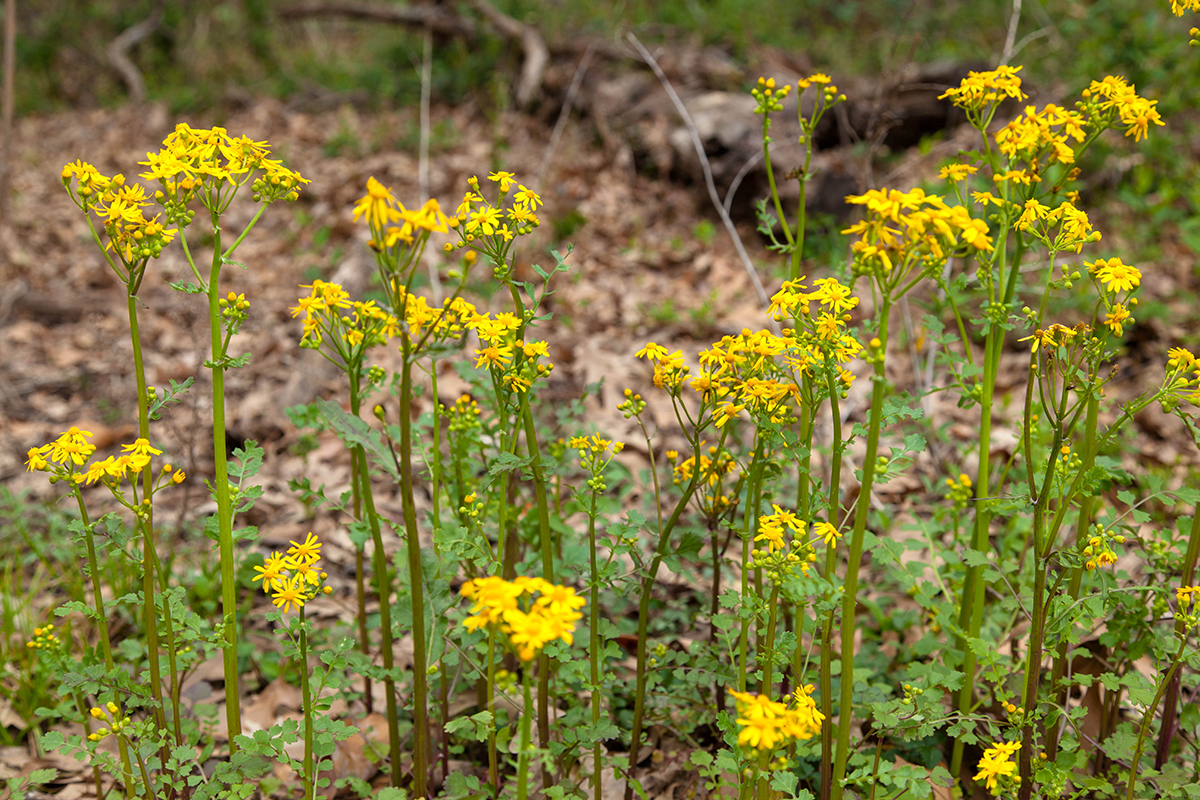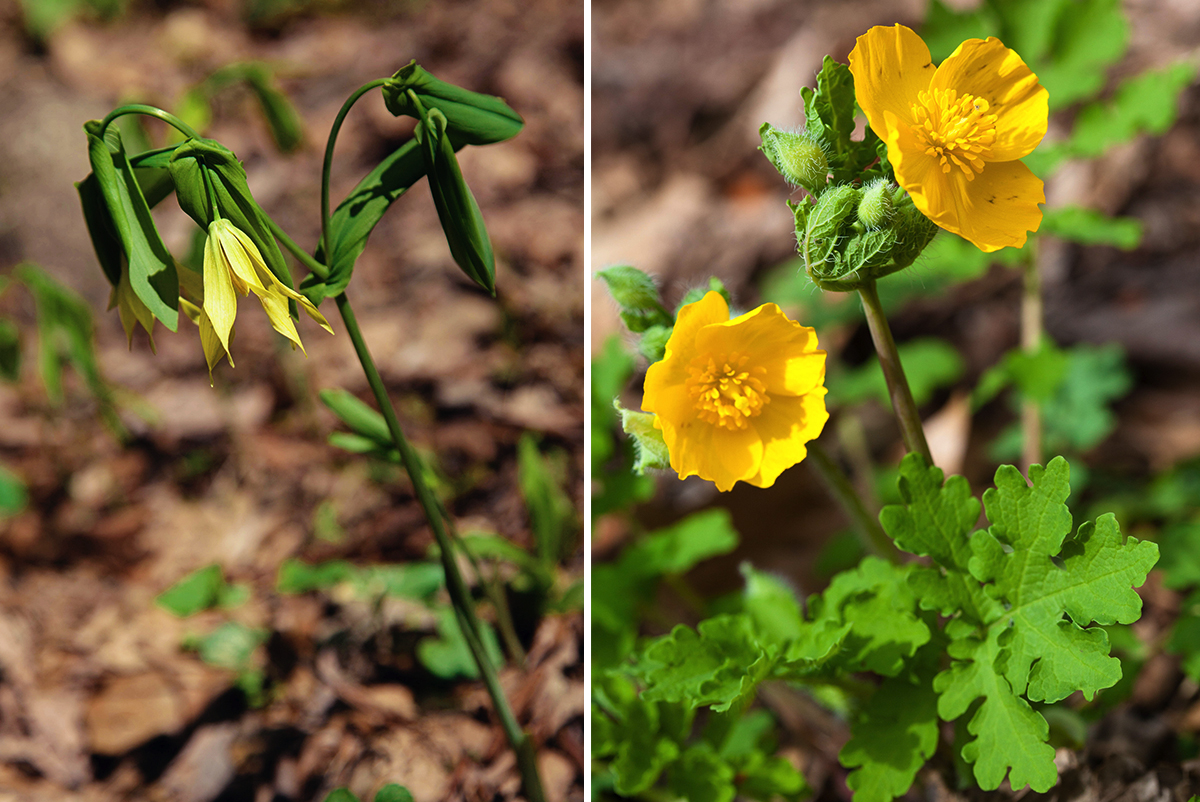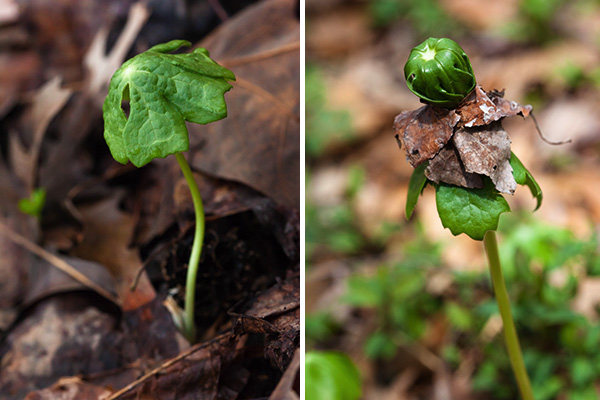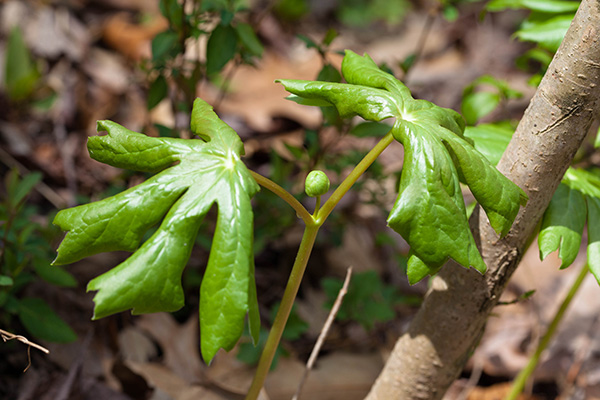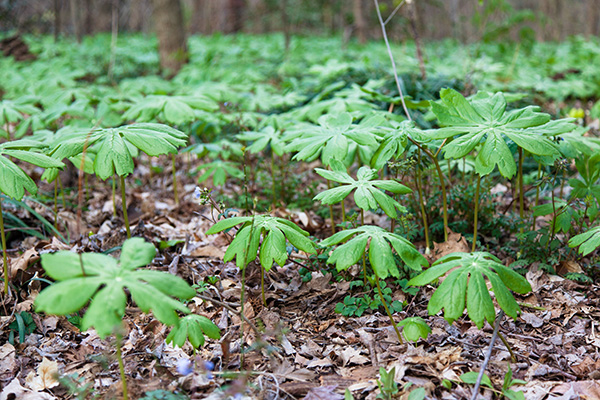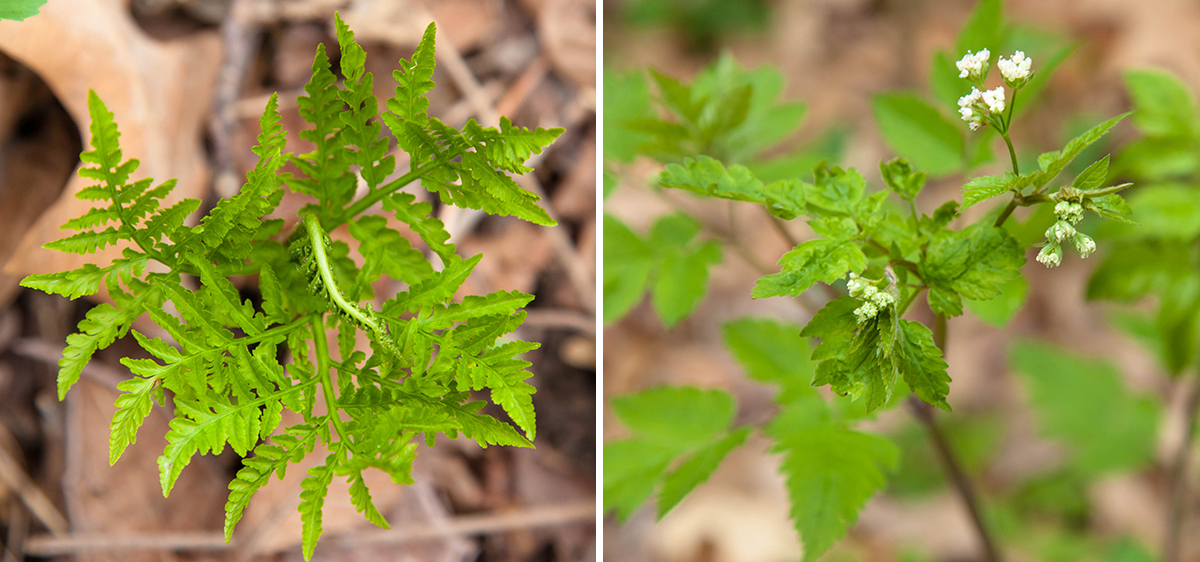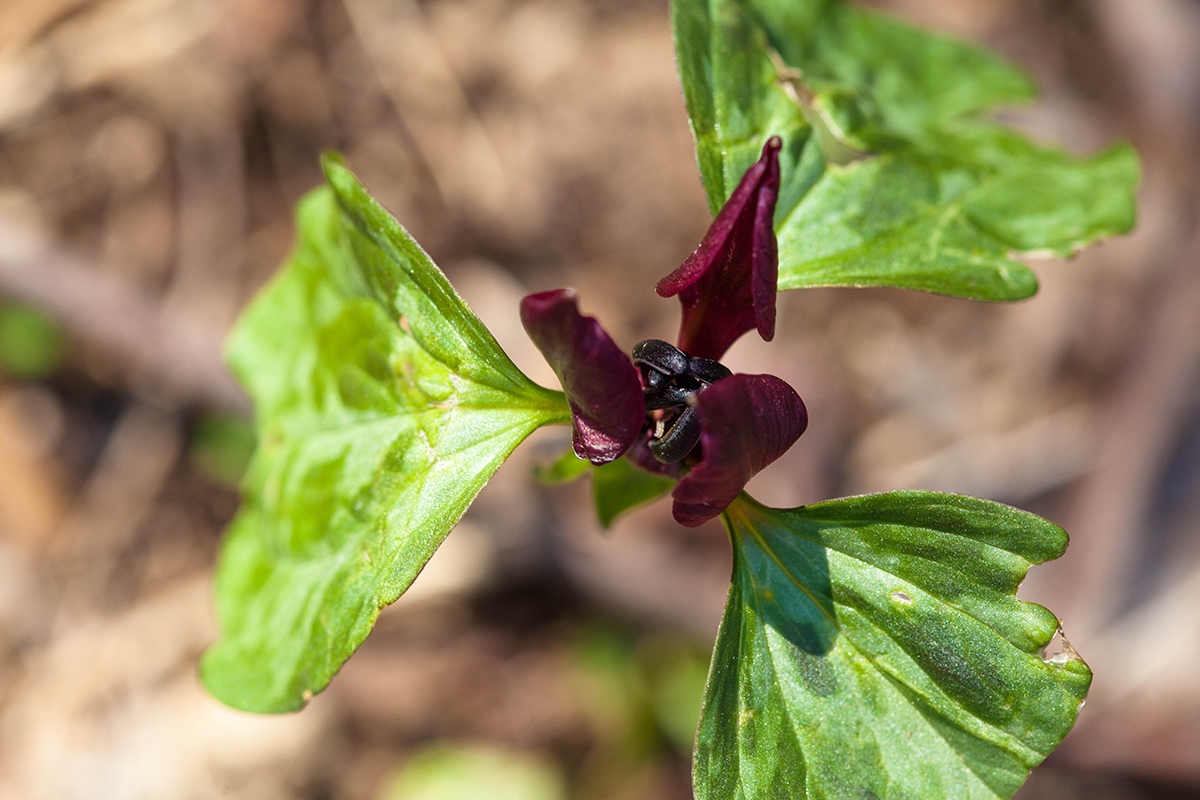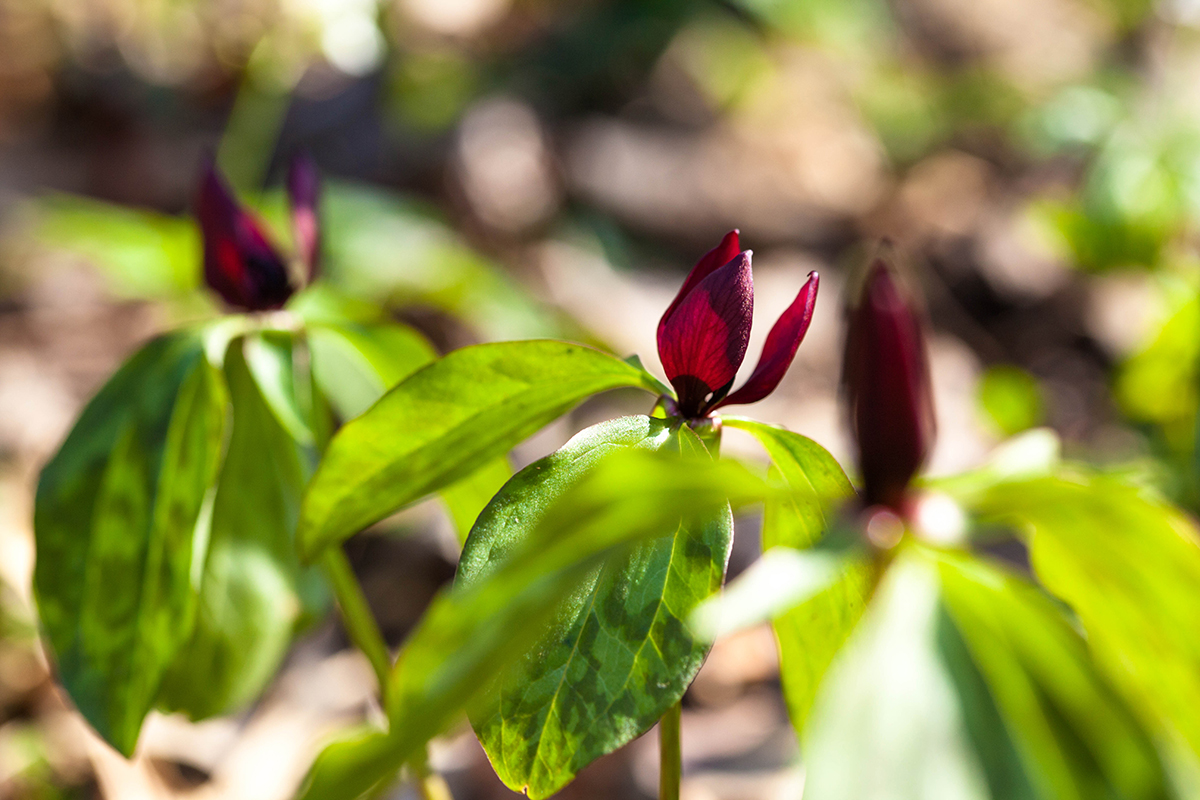A Walk on the Wild(flower) Side
While it’s certainly fooled us a couple of times already this year, we’re finally prepared to say that spring has arrived in Memphis. And what better way to celebrate the arrival of the season than to go exploring in the Old Forest? There are more than 300 types of flowering plants in the forest, among them many wildflowers that bloom in the springtime. Here are a few of the beauties we’ve spotted so far.
The first wildflower we saw in bloom this spring was cutleaf toothwort. Its name comes from the obviously jagged appearance of its leaves, but also from the tooth-like appearance of its roots. It’s a spring ephemeral, which means you’re not likely to see any remnants of the foliage after spring ends–it’ll wither back to its underground parts. Spring ephemerals take advantage of the copious sunshine available before the trees begin to leaf out to bloom and spread their seeds.
Jacob’s ladder (at left) is another early bloomer, named for the ladder-like arrangement of its leaves. To the right is woodland phlox, which isn’t widespread within the Old Forest but provides a nice nectar source for the insects who happen across it.
These are a couple of varieties of wood violets. The one on the left is likely smooth yellow violet, while the one on the right is either butterfly violet or common violet. We’ll have to take a closer look!
These yellow flowers on the edges of the forest are butterweed, a member of the aster family (which includes other recognizable plants like daisies, dandelions, and goldenrod).
The flower on the left here is large-flowered bellwort, a member of the lily family. Its flowers hang like bells and are favorites of bees. To the right is a plant you’ll find all throughout the Old Forest this time of year: the celandine poppy. This plant sows itself easily and forms beautiful drifts. You can’t miss it in the woods right now!
Another plant you can’t miss right now: mayapple! They’re tiny at first, but soon form a blanket over the forest floor. Sometimes, when they come up from the ground, they punch through a fallen leaf. As the mayapples rapidly expand, the leaf acts as a girdle, keeping the plant from opening. They’re very easy to free, though–rip the leaf off and you’ll feel like you’re opening an umbrella!
It can take a few years for a mayapple to mature and produce a set of two leaves. In the axil of those leaves, a single white flower forms, which then gives way to a fleshy berry.
They make a beautiful carpet for the forest floor, don’t they?
This isn’t a wildflower, but it is a beautiful native on display in the forest: coral honeysuckle. Destructive Japanese honeysuckle is also present in the Old Forest, and can be difficult to tell apart from the coral variety, but this photo is of your friendly native version.
Here are a couple of plants we recently spotted beginning to come up: to the left is rattlesnake fern, which is a tiny fern growing less than a foot tall. The plant on the right is sweet cicely, whose seeds have tiny barbs that allow them to stick to fur and feathers (the better to distribute themselves!).
Finally, we have another plant that is blooming like crazy right now: prairie trillium. With trillium, everything occurs in threes: leaves, flowers, and sepals. The foliage of this kind of trillium is highly variegated, so when you look closely you’ll notice some beautiful patterns on the leaves.
We hope you have a chance in the coming days to take your own walk in the woods. We encourage you to post your photos on our Facebook page so others can enjoy them as well!

